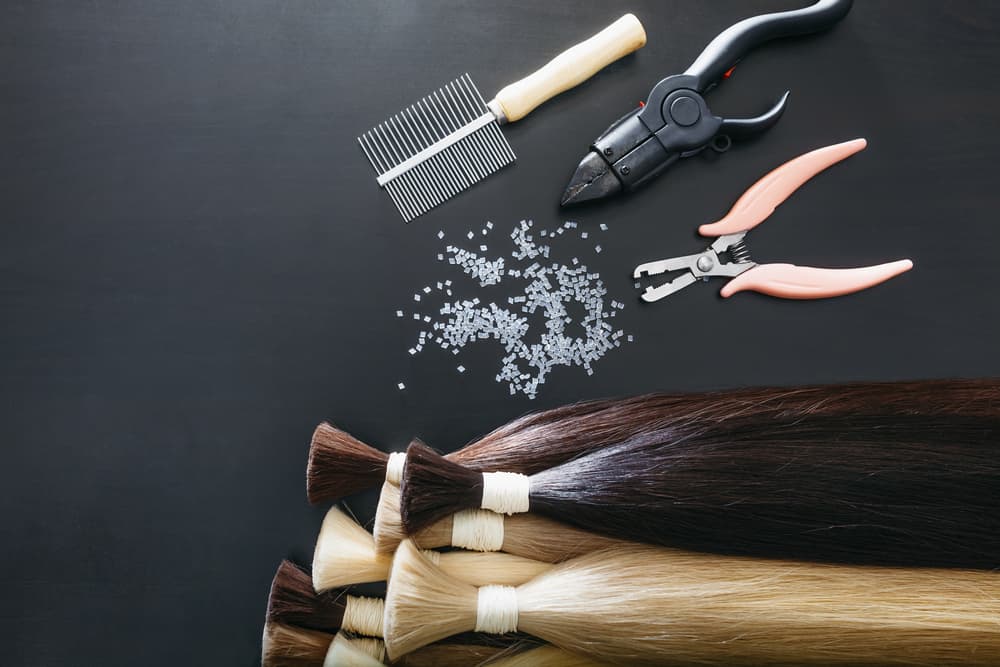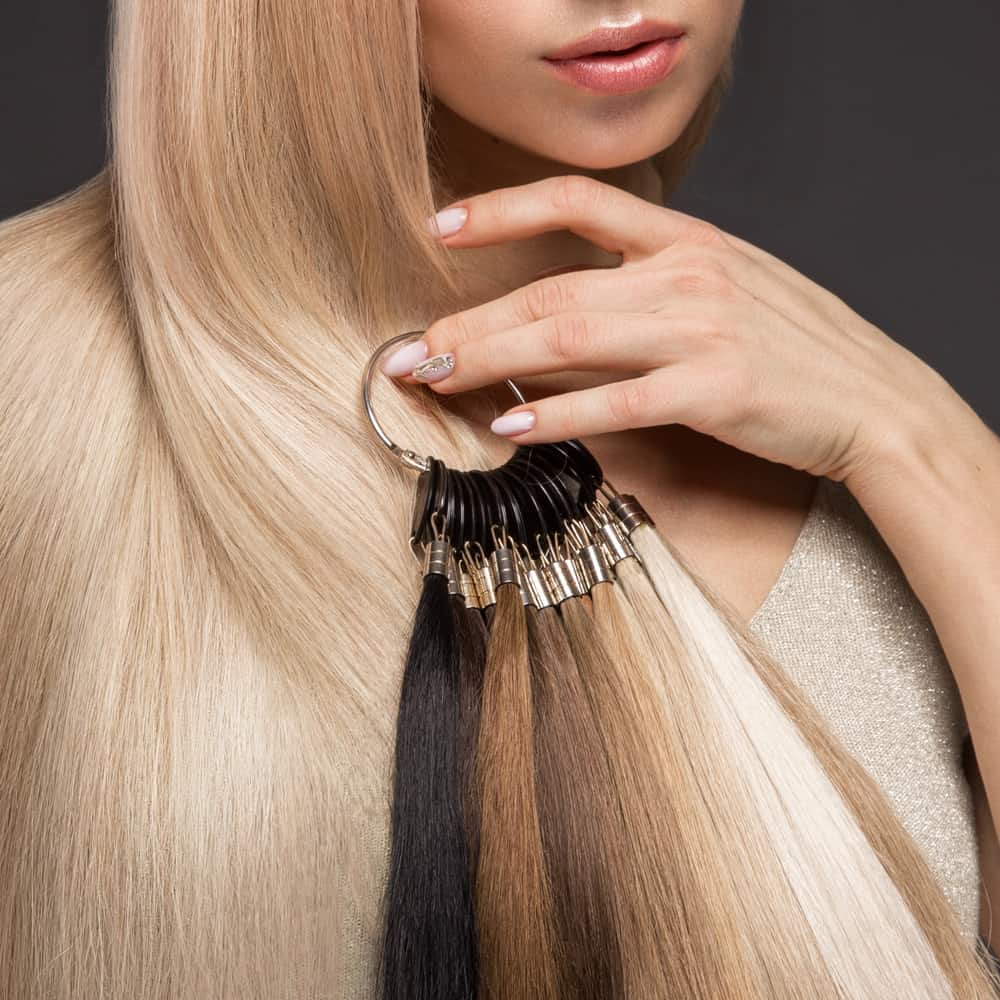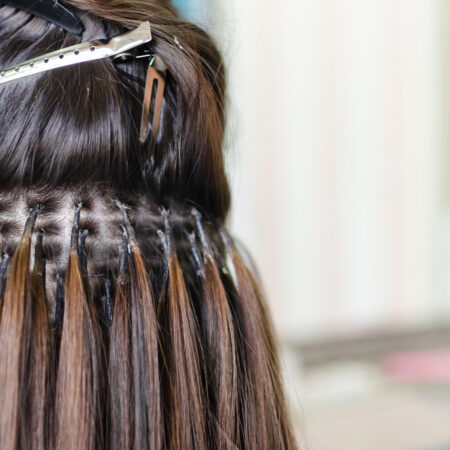If you’ve dabbled with the idea of getting hair extensions, but aren’t quite sure exactly how they work, it can be hard to make a decision one way or the other.
Like many other beauty products and cosmetic enhancements, hair extensions come with their own set of pricing, differences, and considerations that you should try to fully understand before you take the plunge and install them.
Fortunately, we’ve complied everything you need to know about hair extensions and how they work into one simple article for your convenience. Read on to find out the many factors that you need to understand in order to make an informed decision on hair extensions.
- The History Behind Hair Extensions
- Synthetic vs Real Hair Extensions
- Types of Hair Extensions Available
- How Much Hair Should You Get?
- What About Wigs?
- Caring for Your Hair Extensions
- Are There Any Drawbacks to Hair Extensions?
- How Long Can You Wear Hair Extensions?
- The Average Cost of Hair Extensions
- Changing up Your Look
The History Behind Hair Extensions
Hair extensions have a long history and can be dated back to 3400 BC, where they were commonly used by ancient Egyptians, including Cleopatra. Throughout the ages, celebrities, royalty, and the general public alike have used hair extensions in their daily routines and styles, as the extensions were often part of historical hair trends.
Today, hair extensions are widely used to easily transition between short and long haircuts, dress up your tresses for a night out, define unique styles, cover up thinning or balding hair, and as a protective style for natural hair.
All genders and ages of person can, and do, use hair extensions, so you don’t have to worry about whether hair extensions are the “right” thing for you once you decide that you really want to have them applied.
Synthetic vs Real Hair Extensions
Before we talk about how different types of extension work, we should talk about the two main materials that hair extensions are made out of – real human hair or synthetic hair.
Besides the difference in the production method of the two, with one being sourced from individual people and the other being machine made using thin plastic fibers, these extensions types have to be cared for differently.
Human hair holds up to heat styling and washing much better than synthetic hair does, and can even be dyed along with your real hair. Synthetic hair is cheaper, but it can be harder to make it blend into thinner hair types, it cannot be dyes, and the plastic material of it makes it a little bit thicker in texture.
The best choice for you would be a material that you think fits your natural hair and blends in as much as you want it to, without breaking your hair extension budget.
Types of Hair Extensions Available

This list is comprised of the most popular hair extension types; there may be other types of hair extensions out there, but for most people, these types below will be the ones that virtually all hair stylists know how to properly apply; they’re also the best looking.
Clip-In
Clip-in extensions feature a panel of hair that has either a fabric or silicone clip at the top of the hair, where the cuticle would be. This extension is then clipped into hair, close to the roots, and concealed by a top layer of natural hair.
In addition to clip-in hair extensions, you can purchase clip-in bangs to give yourself a new look for the day.
This is the easiest extension to DIY yourself and one of the cheapest. Clip-ins are also great for those who don’t want too much commitment, as they are quickly installed and removed.
Tape-In
A tape-in extension is a panel of hair that has a thin piece of tape adhesive over the cuticle area of the hair. This adhesive area is then applied to the hair a little bit below the root, and then bonded onto your natural hair using a hot tool, such as a flat iron.
This type of extension is fairly durable, but it is a good idea to get a professional to install them, as the adhesive and hot tools are hard to manage alone.
Fusion
With fusion extensions, the hair extension strands come with a glue tip already on them. The extension is then bonded to the hair using a special tool, like the one seen in this video, securely gluing the extension to the natural hair.
Fusion extensions are durable but run a higher risk of damaging your hair, as both the adhesive and the hot tool can cause breakage or hair loss if the extensions are applied or removed incorrectly.
Sew-In
Sew-in extensions are also commonly called weaves. This type of extension is fairly thin and is applied to hair by literally being sown into a braid on the wearer’s head.
Sew-in extensions are typically better for those with thicker, coarse, or African American hair, because the tightness of the braids and extensions can damage someone who has a thinner or finer hair type.
Sew-in extensions are very durable and practically seamless, meaning it is easy to hide the fact that the extensions are not your natural hair.
Microlink
Another type of extension that is typically better suited for thicker or African American hair, microlink extensions are applied by attaching a strand of extension to a small amount of natural hair using a bead.
A specialized tool is used to tighten the extension, pulling the bead into place and securing the extension on the natural hair.
Because this process needs to be completed correctly to avoid pain and hair damage, it is recommended to see a professional to install this type of hair extension for you.
How Much Hair Should You Get?
Hair extension hair is typically sold in packs, and depending on how thick and full you want your extensions, you could be looking at purchasing in between 2 and 10 packs.
In general, for a person with thinner hair that wants a full head of extensions, you will need between 5 and 9 packs; for someone with thinner hair who wants to highlight or cover up certain areas of their head, 2 to 5 packs may be enough.
Anyone with thicker hair or a larger head size will likely end up needing to purchase larger quantities of hair packs, as they will need enough to cover their head and build up volume, so the extensions perfectly blend into their natural locks.
What About Wigs?
While wigs aren’t technically hair extensions, a lot of people do use them to change up their style and extend the length of their hair, similar to what extensions are used for. Wigs can be a great option if you want to give the utmost protection to your natural hair while still adding length or trying out a unique new look.
You can read more about selecting the best wig for you in this article.
Caring for Your Hair Extensions
While wearing hair extensions, it is incredibly important to care for them in the right way. With both human hair and synthetic hair extensions, you can treat them like your real hair, except for some special considerations.
You should try not to wash your extensions too much, as shampoo can loosen the adhesives on extensions that are taped, fused, or otherwise glued into your hair. Clip-ins should be removed before you wash your hair, and you need to make sure to take extra care of your scalp with conditioning treatments if you have a sew-in. Make sure to brush your hair on a regular basis to prevent the extensions from knotting or clumping up.
In general, you should avoid swimming with your extensions in, because pool chemicals can deteriorate their condition. However, it is safe to exercise with your extensions and style them; use caution with heated tools on synthetic extensions, as too much heat can melt them and make them look a little strange.
Check out this article for more in-depth information about properly caring for your hair extensions.
Are There Any Drawbacks to Hair Extensions?
While hair extensions can be a fairly easy way to change up your style and give yourself flowing locks, they are not without their own drawbacks.
Wearing hair extensions too often and for too long of a time can severely damage your hair at the roots, leading to hair damage, loss, and hair weakening. Additionally, wearing a sew-in for too long can actually prevent your natural hair from growing and may make the hair brittle.
It is a good idea to take breaks between hair extension applications so you can allow your hair to breathe and repair itself. It is also a good idea to use a strengthening treatment on your hair in between extension applications to keep it at its healthiest.
How Long Can You Wear Hair Extensions?
Depending on the type of hair extensions you have applied, they can last between 2 and 6 months before they need to be reapplied due to hair growth, or removed altogether.
Some high-quality human hair extensions can stay put for up to a year with the right application technique, but you should remember to take breaks between extension applications to allow your hair to restrengthen itself and prevent future damage.
The Average Cost of Hair Extensions

Because of the variety of application styles, hair dresser skill level, and material of hair extensions, there is a large range when it comes to the cost of your extensions.
Clip-ins are generally the cheapest type of extension and can be purchased in most beauty stores, while tape-in, fusion, sew-in, and micro-link extensions can all be fairly pricey, depending on the material used.
The average cost for hair extension application starts around 100 dollars for clip-ins and can go all the way up to 3,000 dollars for a full head of permanent, professionally-applied, extra-long extensions. However, most people will end up paying between 200 and 600 dollars for hair extensions.
Changing up Your Look
With hair extensions, it can be easy to change up the look of your tresses for just a day or for several months at a time. And now that you understand how each type of hair extension works, you should easily be able to make a decision on which kind to get without any fear of the application process.
As long as you remember to take good care of your hair both during and after extension application, you’re sure to have the luscious locks of your dreams.
